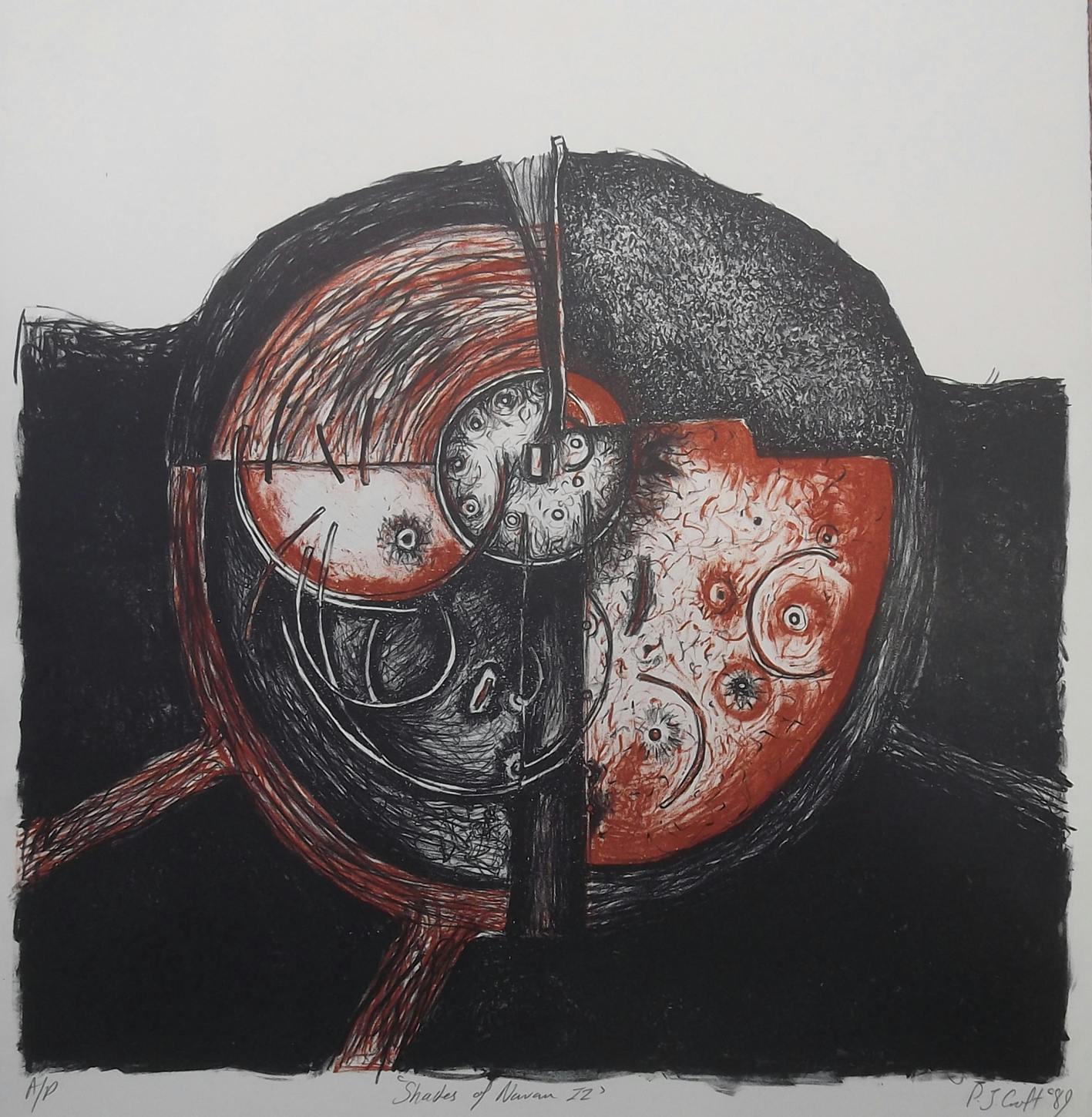Paul Croft (b.1963)
Shades of Navan II (1989)
Paul Croft was born in Belfast in 1963 and is currently a lecturer in printmaking at the School of Art, Aberystwyth. Since qualifying as Tamarind Master Printer in 1996, his research has focused on technical, social, historical and contemporary aspects of British and international lithography. He has published two seminal books on stone lithography (2001) and plate lithography (2003) and has curated exhibitions: Stone Plate Grease Water International Lithography 2007-2008, Contemporary Chinese Printmaking 2014-2016 and Xiaoxiang Exhibition of International Printmaking 2015. He has exhibited his work in the UK, Ireland, USA, China, Australia and New Zealand and as a collaborating printer he has worked with artists from across the UK.
In 2008 Croft was elected a Fellow of The Royal Society of Painter-Printmakers (RE) and he has recently been invited to become a member of the Royal Cambrian Academy (RCA).
This piece, entitled Shades of Navan II is one of a series of drawings and prints made in 1989 based upon the site of Navan Fort, known also as Emain Macha, located in Co. Armagh. Comprising of a large mound and barrow surrounded by a ditch and earthen ramparts, the site is considered to be the ancient capital of Ulaid or Ulster. The oldest part of the monument likely dates to the Neolithic period while more recent additions have been accurately dated to 95 B.C.
Inspiration for this piece came from sketches of archaeological drawings and plans that resulted from excavations that show layers of habitation, post holes and rings of buildings and huts. Significantly, as the image developed from one medium to the next, layers of drawing became buried or were excavated using erasers, scrapers and burnishers and in the final prints there is a sense of looking through slices of uncovered earth and history.
For this lithograph, two stones were drawn up in crayon and wash to print the colours burnt sienna and black. The lithograph was printed by John Breakey at Carnacaville Print Studio, Newcastle, Co. Down.
